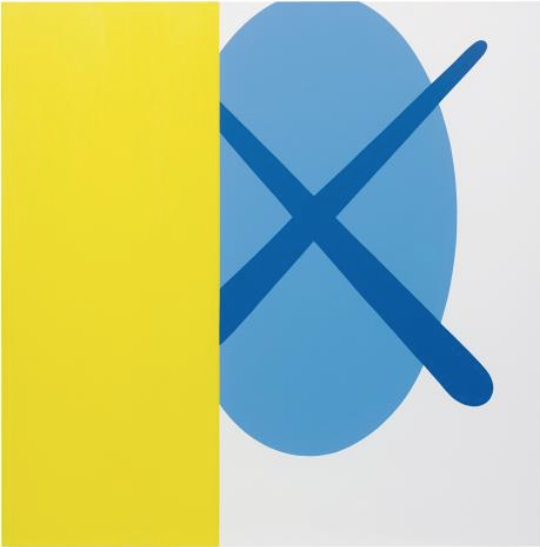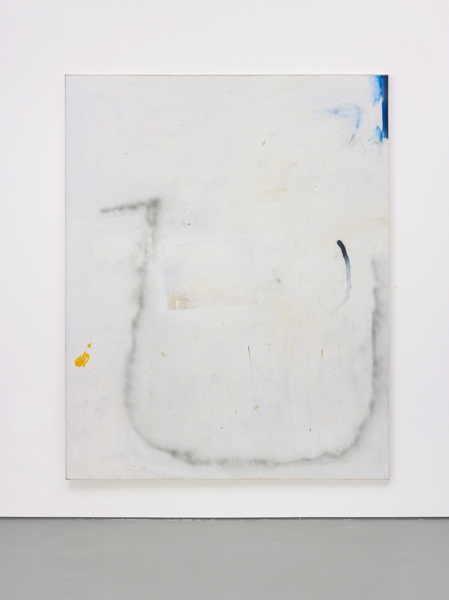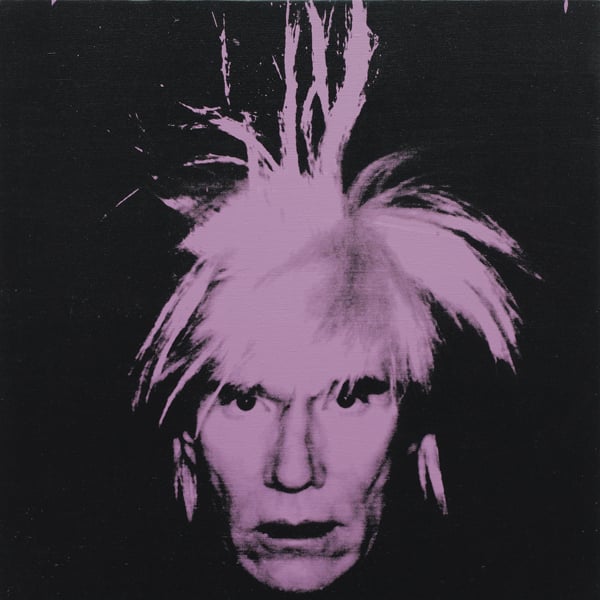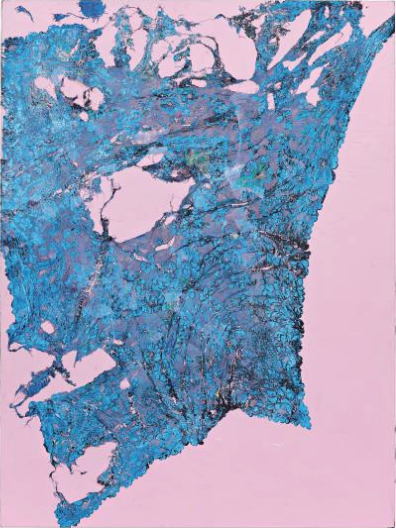


David Ostrowski, F (Gee Vaucher) (2012).
Image: Courtesy Phillips.
The craze for “flippable” process painters is not over. Phillips’s ended London’s contemporary art sales with an intimate auction, breaking a new record for the young German painter David Ostrowski.
The 27 lots presented grossed £9.9 million ($16,954,900), including buyer’s premium, comfortably within the auction’s presale estimate but markedly short of the £12.3 million ($21,065,200) achieved in 2013, a 19.5 percent decrease since then. Four lots were bought in. Two lots—Banksy‘s sculpture CCTV Angel (2006) and Rachel Whiteread‘s Untitled (Felt Floor) (1997)—were withdrawn minutes before the beginning of the event.
While the sale boasted a solid sell-through rate of 95 percent by value and 85 percent by lot, the atmosphere at Phillips tonight could only be described as tepid. A mere six pieces beat their higher presale estimates. The auction’s star lot, an Andy Warhol 1986 Self-Portrait (Fright Wig), crept at a glacial pace from its starting price of £2 million ($3,425,240) to hammer at £2.5 million ($4,281,550), when it sold to a telephone bidder.

Andy Warhol, Self-Portrait (Fright Wig) (1986).
Image: Courtesy Phillips.
What little heat there was belonged to the youngsters—some of them attracting extraordinary levels of attention. David Ostrowski, a student of Albert Oehlen at the Kunstakademie Düsseldorf, is a case in point. Said to have retailed for as low as £18,000 a year ago, his abstract paintings have become so frenetically sought-after that dealers are rumored to be applying the rule of “buy one, buy another one for a museum,” hoping to give institutional grounding to his commercial success.
Auctions can be a hassle-free way to purchase desirable works, proving especially popular with new-to-market collectors who have neither the ability nor the inclination to dance to the gallerists’ tune. “That’s what makes the sensational prices,” Phillips CEO Michael McGinnis told artnet News after the sale.
Tonight 12 phone bidders fought over Ostrowski’s F (Gee Vaucher) (2012), propelling it way past its higher estimate. It eventually sold for £170,500 ($292,002), beating his previous record set by Phillips in New York last May.
The equally fashionable Lucien Smith was also a hit. His so-called Rain painting Boys Don’t Cry (2012) flew past its higher estimate, triggering a back-and-forth between telephone bidders and the room, and finally selling for £116,500 ($199,873).

Mark Flood, Mineral (2003).
Image: Courtesy Phillips.
Overall, abstract painting—particularly of the kind combining easy-on-the-eye aesthetics and intellectual kudos—performed well. A gold-plated picture by Rudolf Singel, a protégé of über collector François Pinault, hammered at £700,000 ($1,198,830), making it the second-most expensive lot of the auction. It features the cast of marks and graffiti left by visitors in the artist’s midcareer retrospective at the Museum of Contemporary Art in Chicago.
A bidder on the phone with Moscow specialist Svetlana Marich bought Mark Bradford‘s dizzying arrangement of net-like shapes An Opening on the Left (2012) for £698,500 ($1,196,270).
As at Christie’s last night, the disappointments came mainly from minor artworks by blue chip names. Money might have flown back to the auction houses post-recession, but collectors have sharpened their focus, particularly, it seems, in the middle market.
Ed Ruscha‘s work on paper Reef (1975) was bought in for lack of substantial bids, and his Spots (1972) barely made it to the lower end of its estimate, hammering at £190,000 ($325,398). Anselm Kiefer‘s painted photograph Alexandria (1987) was also bought in. Results for Gilbert & George, Robert Morris, and Antony Gormley were equally lackluster.
But changes are afoot.
Phillips, which has perennially suffered from its third place position in the auctioneering game, is about to roll out the next stage of its revamp. Christie’s veteran and former director of Qatar Museums Authority Edward Dolman will begin as the new chairman and CEO in a couple of weeks. His office will be in the auctioneer’s new 52,000-square-foot building at 30 Berkeley Square in London’s Mayfair (acquired in February 2013 for a reported £100 million, or $151,597,000 million at the time). The new headquarters will be unveiled during Frieze Week next October.
If one believes the hype, the next Phillips contemporary art sale could be a very different kind of deal.





